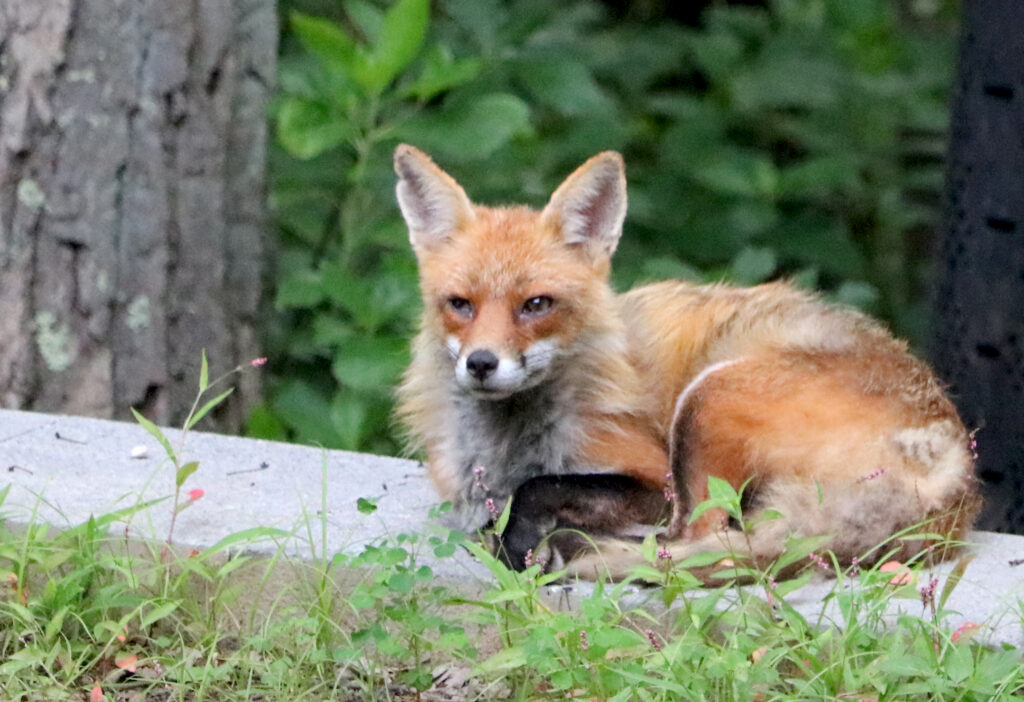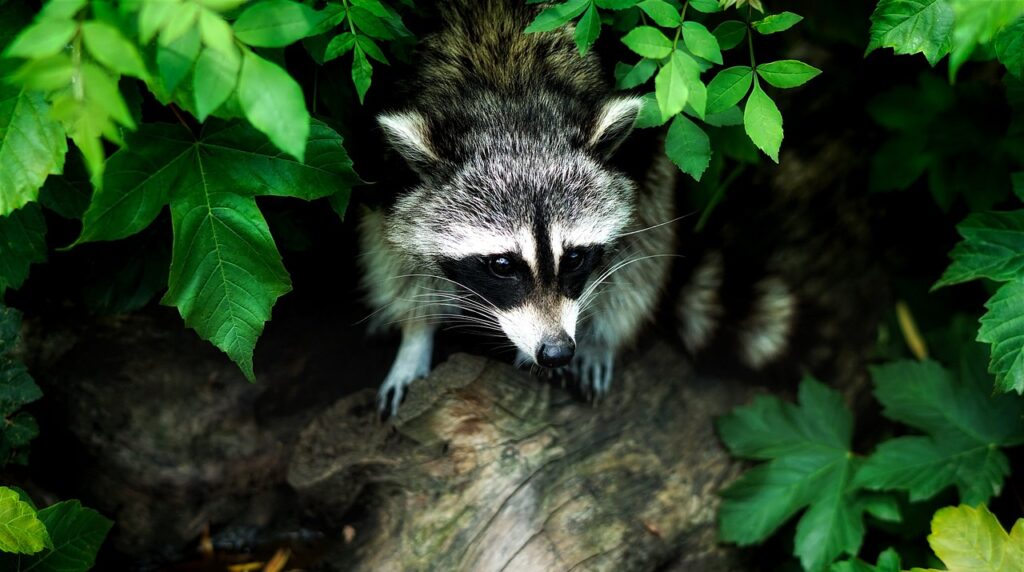Wild Teenagers on the Town
As kids head back to school, our local mammal neighbors are also experiencing a new education. In the fall, many local fox, raccoon, and skunk families tend to break up as this year’s young head off on their own. Because of this, we will have increased sightings of “teenagers on the town”, particularly during the day. This is normal and not automatically a symptom of disease like rabies.
Maryland is home to multiple mammal species, including three wild species of canines- gray foxes, red foxes, and coyotes. Out of the three, you are most likely to see red foxes. While fox teenagers sometimes hang out near where they are born, most tend to disperse in the fall. Similarly, raccoons will often leave their parents, but some will stay in small family groups and overwinter together.

As teenagers, these young mammals haven’t fully experienced the world yet and tend to be a bit more curious and less wary than their older counterparts. Sometimes these teenagers also find ways to get into trouble by getting into trash, climbing onto porches, or curiously following folks. The teens will also get into loud play fights in the woods and often will sleep out in the open. Skunk youngsters are a bit “trigger happy” and will readily spray at any perceived danger instead of taking time to assess the situation. (So, keep that in mind if you have a pup and see a skunk this time of year!) Similarly, young bats are starting to disperse from their maternal colonies, and it is not uncommon to find them ending up in odd locations for a roost.
During fall, it is important to be aware of our fellow mammalian neighbors and to take extra precautions to ensure they don’t become a nuisance. As always, it’s important to secure your trash, clean up under bird feeders, and remove any pet food placed outside at night. All of these items are attractive to local mammals. While cute, these animals are wild, and it is best not to feed them as that leads to nuisance situations and allows animals to congregate and spread disease. Another note of caution is to never handle wild animals, including bats, without proper protection like gloves. For all wildlife, it is best to keep wildlife wild and to remember that they need habitat and not handouts. The Maryland Wild Acres program has a plethora of information on how to help wildlife by creating backyard habitat.

Even with precautions, you may find yourself with a nuisance animal. First, determine what is attracting it (food, shelter, etc) and remove that attractant. Second, make living in your yard uncomfortable by using loud noises, clapping, or spraying with a hose. If things get to a point of no return, you can pay to have the animal trapped and euthanized. As a note, it is illegal in Maryland to trap and relocate rabies-vector species like raccoons, foxes, and skunks. However, if an attractant is still present (like food), then a new animal will likely take up residence.
To explore safe and legal ways to deal with problem animals, or to locate people licensed to handle wildlife complaints, you can call the nuisance wildlife hotline at 1-877-463-6497 or visit here. If you have an injured, sick, or potentially orphaned animal, then please contact a licensed wildlife rehabilitator.
